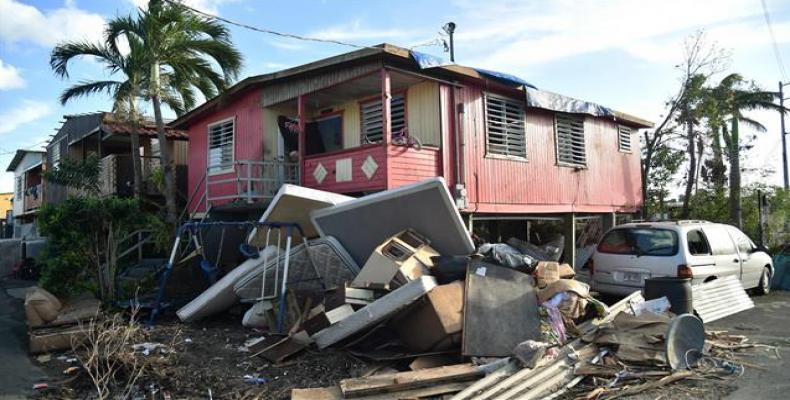San Juan, June 12 (RHC)-- A new investigation found that 68 percent of the people who died in Puerto Rico between September and December of 2017 - post-hurricane Maria - were over the age of 70.
The investigation, conducted by Puerto Rican newspaper, El Nuevo Dia, found that nearly half of these elderly deaths occurred in hospitals, and males made up 54 percent of those who died while under direct medical care. Mainly, these septuagenarians and those above died of diseases such as Alzheimer's, diabetes, pneumonia, chronic heart conditions and septicemia - a blood infection that frequently happens to hospital patients.
A recent CNN report found instances of death among the elderly as the oxygen supplies they were dependent upon, ran out. "This gives you a more specific idea of the health risk that the hurricane brought. It was the only significant factor to cause this increase shown by the data," demographer Judith Rodriguez told El Nuevo Dia after analyzing the island's health statistics provided by the national demographic registry.
The number of pneumonia and influenza deaths went from the tenth cause of death in August to the sixth in December. Septicemia doubled between August and September. It wasn’t just in hospitals where those over the of age 70 were dying, but in nursing homes and emergency rooms, too.
According to Rodriguez, between September and December, the number of nursing home and emergency room fatalities shot up between 25 to 40 percent, based on government records. This investigation supports what experts have been saying since Maria ripped across the island last September -- the collapse of the Puerto Rican power grid that was still struggling to recuperate in February 2018 -- crippled the medical community’s ability to provide adequate service to residents.
"It is always a risk (death) when there are patients in ventilators (artificial) and the light goes out," said Domingo Cruz, senior vice president of Operations at Children's Hospital San Jorge. Hospitals were forced to rely on diesel generators when the combustible that powers them wasn’t readily available post-Maria.
Several experts told El Nuevo Dia that the island’s wrecked telecommunications system exacerbated health problems there. The breakdown in computer systems has forced many patients to pay full price - or go without - for medications because pharmacies can’t access public records to verify who has discounted meds.
According to the Nuevo Dia analysis of registry statistics, there were 1,397 more deaths - a 12 percent increase over 2016 - between September and December 2017. Last month, a study by the Harvard T.H. Chan School of Public Health estimated there were nearly 5,000 "excess deaths" during the same time — deaths that would not have occurred if the island hadn't been forced into a prolonged disaster following the devastating storm.
Nearly 70% of Puerto Rican deaths from Hurricane Maria were over 70 years old


